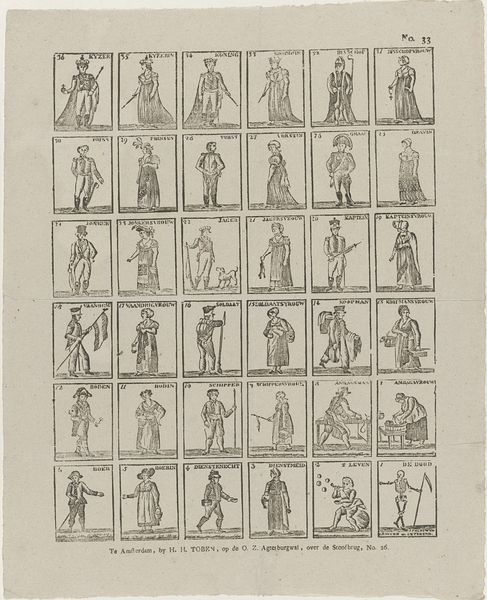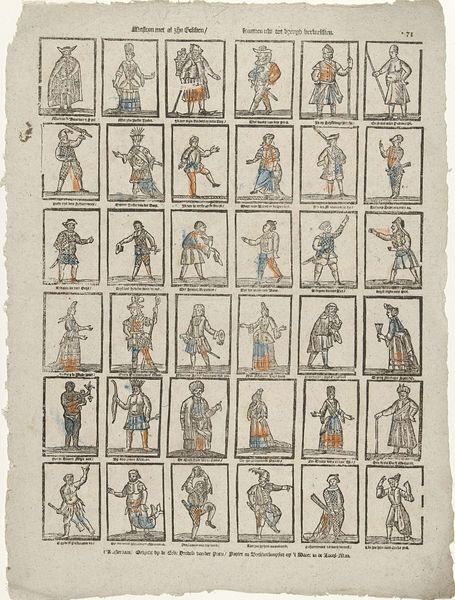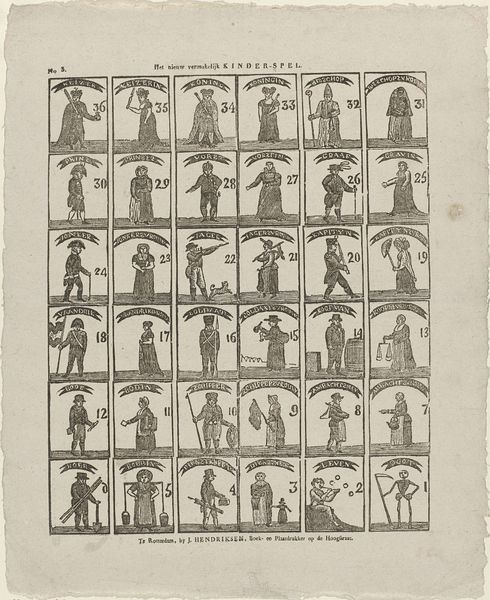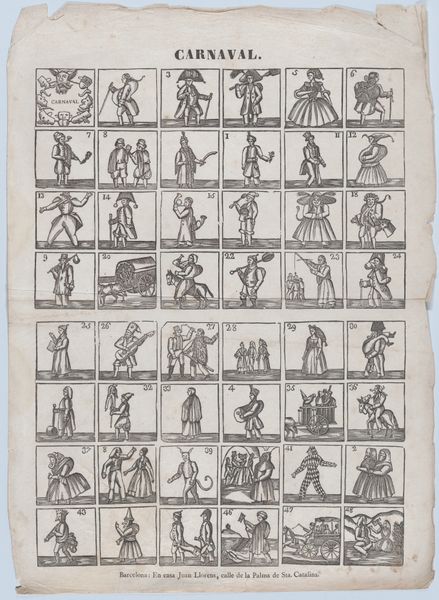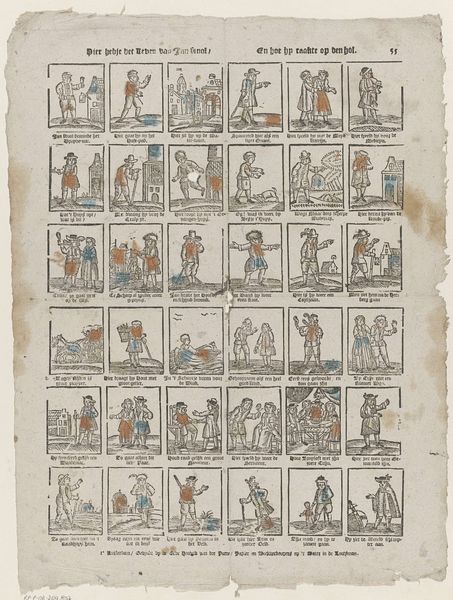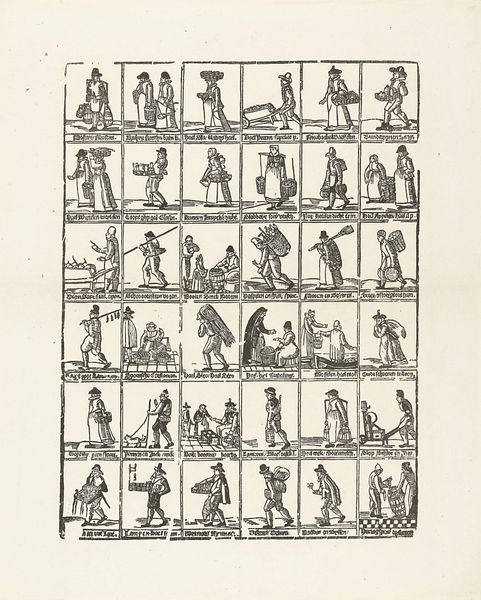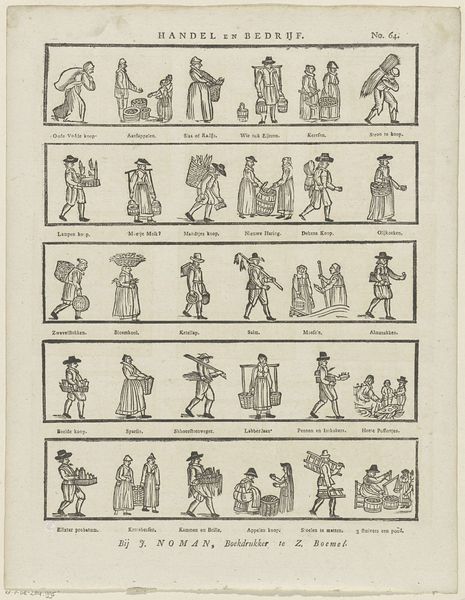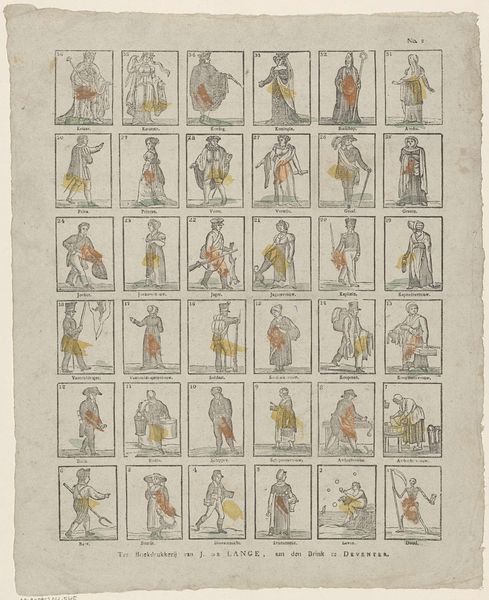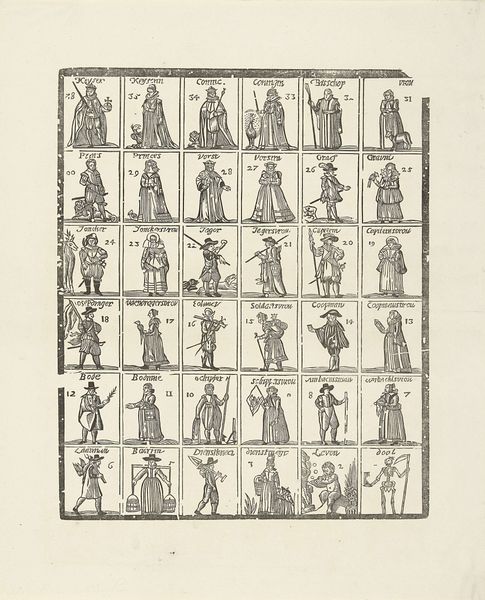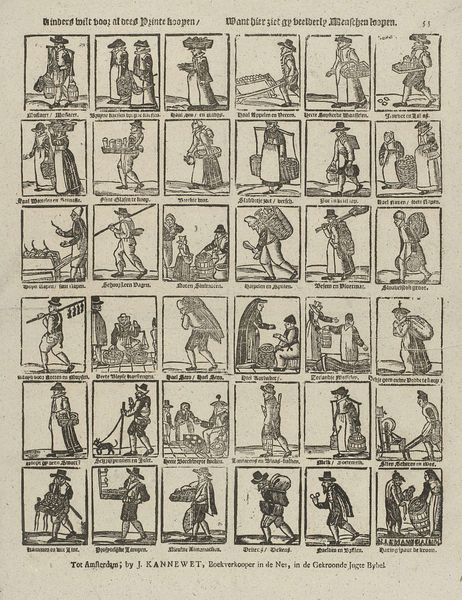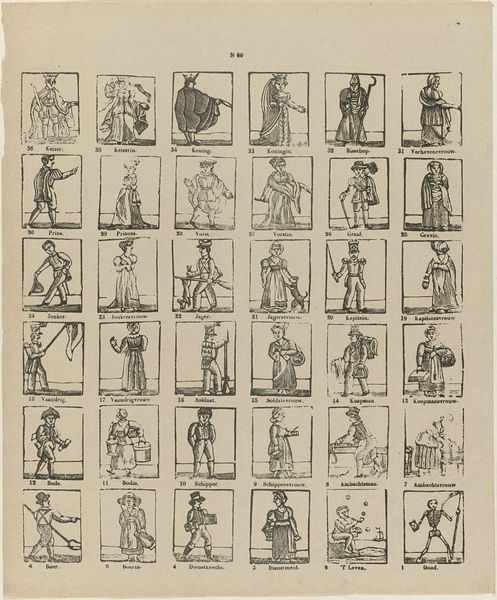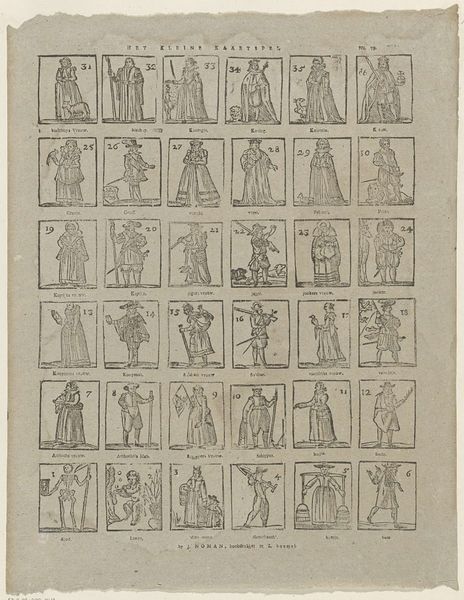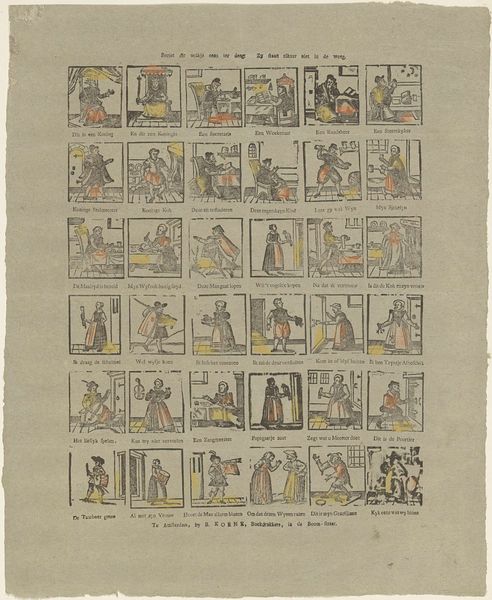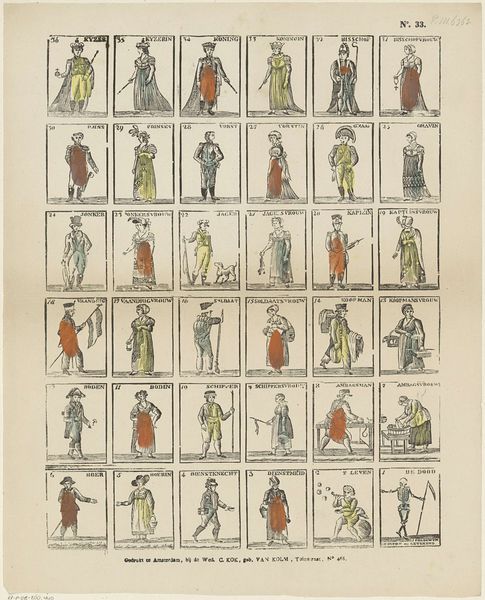
graphic-art, print, etching
#
portrait
#
graphic-art
# print
#
etching
#
figuration
#
genre-painting
#
academic-art
Dimensions: height 405 mm, width 329 mm
Copyright: Rijks Museum: Open Domain
Curator: This print, "Floskaartjes," made by Erve H. Rynders sometime between 1831 and 1854, seems to depict different societal figures in a grid-like format, almost like a set of cards. What's your initial take on this piece? Editor: It's certainly an interesting composition! The grid arrangement, combined with the individual character portraits, reminds me of a sort of social catalogue or game. Given that it's an etching, what stands out to me is the level of detail achieved through the printing process. How does the materiality and production of this artwork inform our understanding of its social context? Curator: That's a great question. Given its form, we might consider it in relation to the broader printmaking industry of the time and how it enabled the relatively inexpensive mass production and dissemination of images. Note how the print medium makes possible the combination of image and text—each figure named. Consider how the specific skills and labor that Rynders put into the design and manufacture reflect the contemporary understanding of the social hierarchy at the time. What might this relatively affordable and repeatable format suggest about attitudes towards class and representation during that era? Editor: So the medium itself allowed for a wider audience to engage with representations of social roles, almost democratizing those images? Was it challenging existing ideas or solidifying class distinctions by making them so readily accessible? Curator: Exactly! It raises fascinating questions about accessibility, consumption, and the material means by which social order was constructed and visualized. Are we looking at reinforcement, critique, or simply observation? The act of distribution through printed matter undoubtedly complicates this. Editor: This has shifted my perspective entirely. Initially, I saw the print as a set of detached portraits, but understanding the material context – the printing process and potential for wide distribution - reveals a far more nuanced commentary on society and class. Curator: Indeed. By understanding the 'how' of its creation, we get closer to understanding the 'why' it was made and the cultural work it performed.
Comments
No comments
Be the first to comment and join the conversation on the ultimate creative platform.
